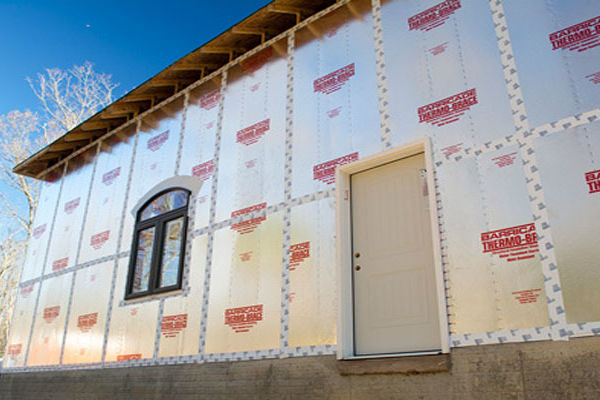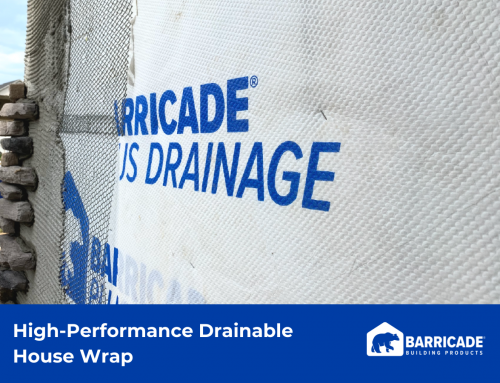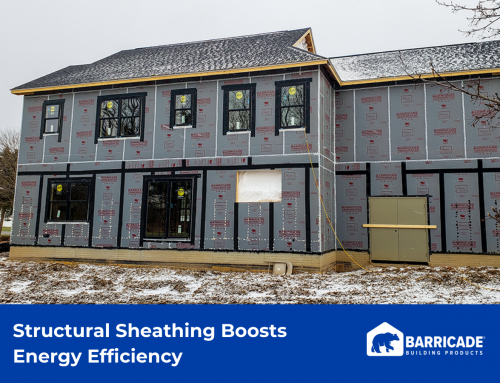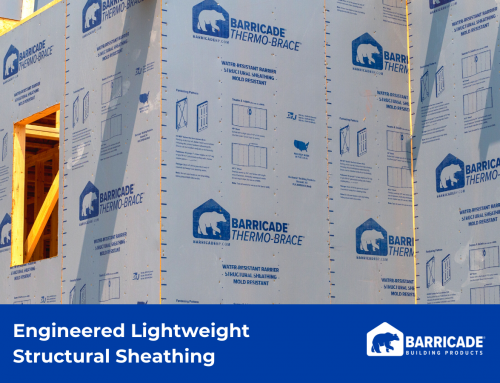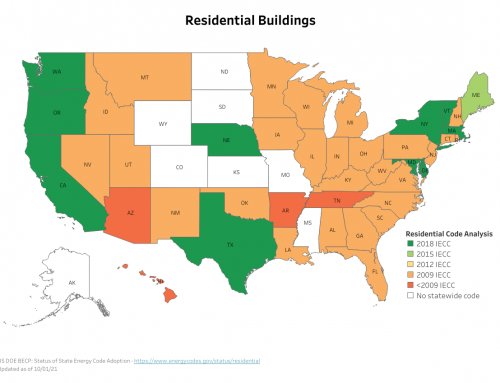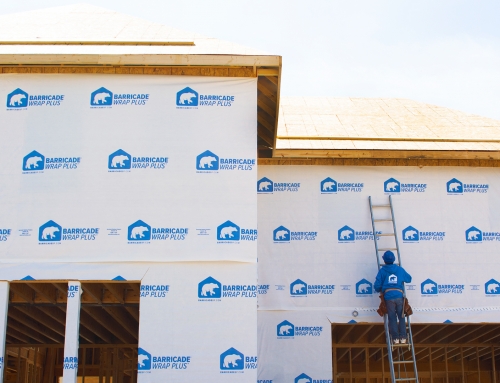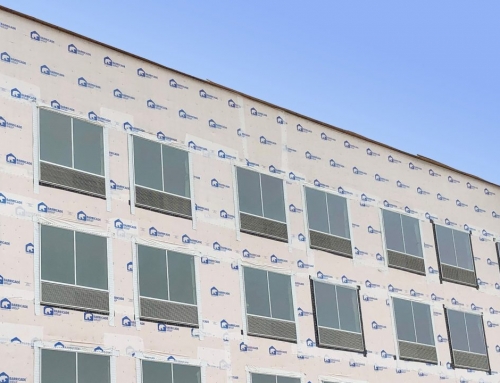Each year, builders of sustainable communities strive to include the best new energy-efficient materials and methods into their new buildings and homes. Energy-efficient building products and techniques contribute towards a tightly sealed thermal envelope and net-zero energy use. Energy efficiency saves money, protects the environment, and creates healthy communities. Furthermore, it adds long-term value to investments.
However, busy builders and developers often find it challenging to keep up with the latest and best energy-efficient building materials and methods. Today’s post hopes to remedy this by presenting information on five top energy-efficient materials vital to constructing sustainable communities.
Top Five Energy-Efficient Materials for Building Sustainable Communities
1.Protective House Wrap
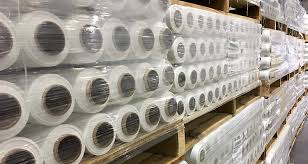
The application of energy-efficient Barricade R-Wrap® Protective House Wrap beneath an exterior cladding provides a secondary line of defense against bulk water penetration. It also contributes towards achieving continuous insulation (CI) and a tight building envelope. A tight building envelope reduces energy use and creates a comfortable and healthy indoor environmental quality (IEQ). R-Wrap’s micro-porous “breathable” feature permits moisture vapor to pass through, reducing moisture accumulation in the wall cavity. It also contains a non-perforated polyolefin membrane that resists bulk rain.
Barricade R-Wrap® is:
- Water-resistant. It passes the tests that measure a house wrap’s water resistance: ASTM D779 (boat test), CCMC 07102 (pond test), and AATCC Test Method 127.
- Air leakage resistant. It abides with the IRC Section N1102.4.1 and IECC Section 402.4 and 502.4.
- Vapor-permeable. Ample breathability is provided with an ASTM E96 rating of 50 US Perms.
Furthermore, all principal building codes recognize and approve Barricade R-Wrap® Protective House Wrap with the following equivalency ratings:
- Complies with the Building Officials Code Administrators International (BOCA) – Alternative to No. 15 asphalt felt, in accordance with ASTM D226, Type 1
- Complies with the Southern Building Code Congress International (SBCCI) for an air infiltration barrier and moisture protection barrier for a weather-resistive barrier to Federal Specification UUB-790a.
- Complies with the ICBO (Uniform Building Code) with a minimum water-resistance of 60 minutes, equivalent to Grade D building paper.
Cool Roofing Materials for Building Sustainable Communities
A cool roof protects against solar heat gain and helps cool attic space, both of which improve indoor comfort and lessen energy bills. A cool roof may also lengthen the roof’s service life. To achieve a cool roof, builders should select low thermal mass roofing materials like slate, tiles, or clay that reflect the sunlight.
2. Renewable Energy Sources for a Sustainable Community
Energy-efficient sustainable communities typically aim to create as much energy as they use by installing renewable energy systems and materials, like biomass, geothermal, hydropower, solar, and wind. Notably, in the first half of 2019, these sources produced 20.1% of the net domestic electrical output.
3. Energy-Efficient Glazing Systems for Sustainable Communities
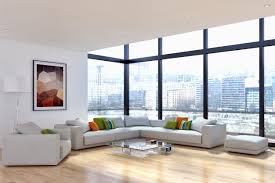
Energy-efficient windows, skylights, and doors, appropriate to the climate zone, provide energy and cost savings, along with light, warmth, and ventilation to structures in sustainable communities. The ENERGY STAR most efficient list for 2019 provides an excellent reference for selecting energy-efficient glazing systems. The list recognizes window and door manufacturers that deliver innovative energy efficiency along with the latest in technological innovation for their products.
4. Energy-Efficient Insulating Concrete Form Walls for a Sustainable Community
Insulated concrete forms (ICFs) provide the thermal mass and continuous insulation needed for high-performing, energy-efficient walls for sustainable communities. Notably, homes and buildings constructed with ICF typically need 32% less energy to cool and 44% less energy to heat than wood-framed structures.
Building an ICF wall involves pouring reinforced concrete into hollow panels (often made of either extruded polystyrene foam or expanded polystyrene), separated by reinforced rebar. Before pouring the concrete, the interlocking units are dry-stacked, like Lego bricks. After the concrete cures, the inner and outer polystyrene ICF panels produce the permanent exterior framework. In the building process, these panels will allow for the installation of plumbing and electrical conduits.
One to three-story buildings can use ICF, including tall, unsupported walls (movie theaters and big-box stores), residential construction, and load-bearing walls (hotels, multifamily residential buildings, and student residence halls).
5. Vital Energy-Efficient Roofing Materials for Sustainable Communities
Roof Underlayment
Barricade® roof underlayment’s cool gray surface reflects light and heat away from the interior of the building, which reduces energy use and saves money. Barricade® roof underlayment has a cool gray surface, keeping the roof’s temperature up to 30 degrees cooler than black underlayment.
Barricade® roof underlayment offers several other vital features besides contributing towards energy-efficiency.
- Waterproof Barricade underlayments don’t absorb water, like felt underlayments. Absorbed water can lead to the growth of mold, which degrades the roof deck. Moisture may also wrinkle the roof.
- Barricade underlayments give 33 percent more coverage per lap versus felt underlayment.
- Barricade underlayments install quicker and save money over asphalt-saturated felt roof underlayment.
- Barricade underlayments have superior tear-resistance and strength compared to asphalt-saturated felt roof underlayment.
- Barricade underlayments meet and surpass ASTM D226 I & II and ASTM 4869 II & IV.
- Barricade underlayments provide UV protection.
Where to Find the Top Energy-Efficient Materials for Building Sustainable Communities
The rise in the worldwide demand for green, sustainable construction challenges builders and dealers to include the best energy-efficient materials in their projects.
Luckily, many sources exist to help make the best material choices for building a sustainable community.
For nearly 30 years, builders, developers, and architects have relied on United States Green Build Council (USGBC) for information on sustainable practices in the building industry, along with the USGBC’s LEED rating system for sustainability. The ENERGY STAR most efficient list provides another excellent resource.

